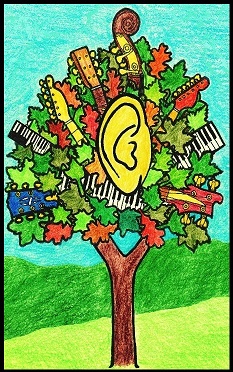 Improvisation is composing and performing music at the same time, making it up as you go along. There’s a long–standing debate among modern music teachers over whether it’s artistically legitimate to use scales as models for improvisation. Some players fixate on learning models, others fixate on avoiding, or even un-learning models.
Improvisation is composing and performing music at the same time, making it up as you go along. There’s a long–standing debate among modern music teachers over whether it’s artistically legitimate to use scales as models for improvisation. Some players fixate on learning models, others fixate on avoiding, or even un-learning models.
The debate over the legitimacy of using scales when you’re improvising single-line solos is more philosophical than practical. Barney Kessel used to recommend to musicians that they abandon all of their theoretical models when improvising. Well into his career, Joe Diorio described how years of working with scales and other models for improvisation had liberated him from the need for any model at all. He recommended that other musicians strive for this same degree of detachment from mental models.
These are both examples of players who used theoretical models for music to reach a point where they could abandon those models and understand music in a more pure and direct way. To the extent that they are chiding other musicians for relying on theoretical models, they are just pulling the ladder up behind them.
Jazz Improv instructors encourage students to abandon all of their theoretical models when they play in class, because every non-classical student walking into Jazz Improv class on the first day is already in an improvising rut. Beginning improvisers fixate on a few favorite riffs, because they’re reliable and safe. The first step to getting them out of their improvising rut is to put them in a free-form situation where they can’t use any of their favorite scales or riffs. This is all happening in a classroom. Abandoning your musical concepts is an interesting mental exercise, but you probably shouldn’t try it on a paying gig, in front of an audience.
Models aren’t necessary for improvising lead-solos, but almost all musicians use them. Most musicians use models for improvising, including scales like the pentatonic, major, minor and diminished, along with arpeggios based on a variety of different chords. For jazz, rock and country players, this is the standard toolbox for improvised solos.
Jazz players are taught how to improvise in eighth notes. First-semester Jazz Improv class is usually all about playing eighth-note solos over quarter-note walking bass lines. Eighth-note lines are how you learn to compose fluid melodies, and play them at the same time.
Play eighth-notes in double-time, and you get sixteenths. Aside from shred and metal, in most popular styles, the fastest rhythmic values are sixteenths. Thirty-second notes in solos are rare. At fast tempos, thirty-second notes are just too fast for the listener to follow, and too fast for all but the fastest musicians to play.
Most musicians who play improvised solos have their favorite figures which they repeat and rework over and over again. Sometimes it’s not obvious to non-musicians when a soloist is reworking a past solo. You would have to know their previous work. Other times, it’s obvious when a musician repeats something they’ve played before. Stevie Ray Vaughan repeated himself all the time. He played the same solo figures on lots of different songs. But his fans loved his sound, so they never got tired of hearing him play them.
© 2019, 2020 Greg Varhaug